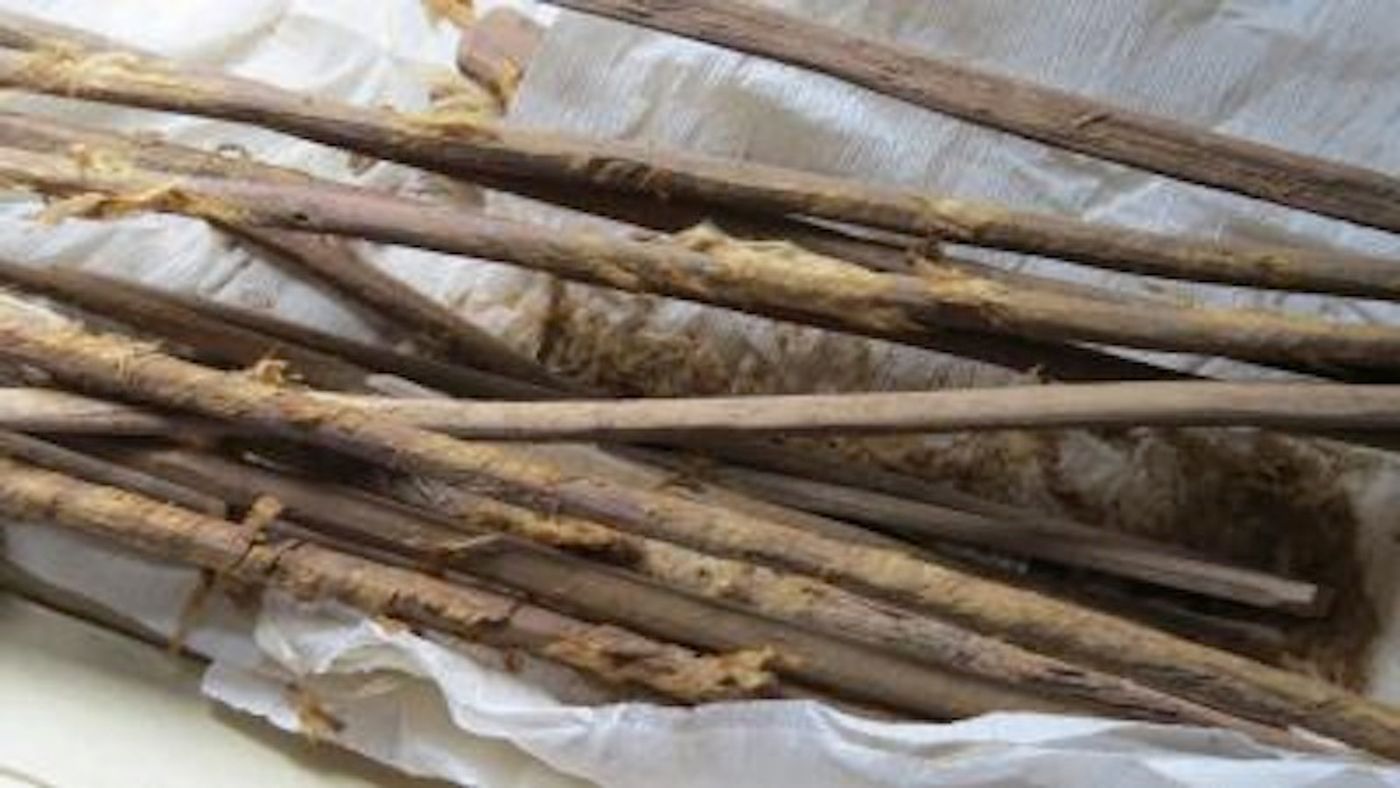The Silk Road has been implicated in the transmission of infectious disease, and it’s no longer an educated guess. The analysis of an ancient latrine in a desert in Northwestern China has provided evidence that travelers carried parasites in their bodies along the journey. The video below explains.
In
a study published in the Journal of Archaeological Science: Reports, researchers at Cambridge University found eggs from parasitic worms on “personal hygiene sticks” taken from that old toilet on the eastern margins of the Tamrin Basin, an area that encompasses the Taklamakan desert. It’s estimated that the latrine dates from 111 B.C., and was in use until 109 A.D. One must unfortunately consider what people had to do before toilet paper existed. It was common for sponges or cloth wrapped around sticks to be used to wipe away a mess after your business was done. Those sticks stuck around, to be found and analyzed some 2,000 years later.

Using microscopy, Hui-Yuan Yeh and Piers Mitchell found eggs from the roundworm (Ascaris lumbricoides), tapeworm (Taenia sp.), whipworm (Trichuris trichiura), and Chinese liver fluke (Clonorchis sinensis). Chinese liver fluke specifically requires marshy areas with abundant moisture for the successful completion of its life cycle. Because the eastern end of the Tamrin Basin is a dry, arid place with a desert, the liver fluke would not have been endemic in this region. The current closest endemic area of this fluke is around 1,500 kilometers away.

Chinese scientists Ruilin Mao and Hui Wang of the Gansu Institute for Cultural Relics and Archaeology originally excavated the latrine and accompanying relay station in Ganzu Province. They worked with researchers at University of Cambridge's Department of Archaeology and Anthropology who led the study, propose that a traveller that was infected with the liver fluke probably journeyed over a vast distance, and posit that their discovery is the first concrete evidence that infectious diseases were carried a long way by people traversing the extensive Silk Road.
"When I first saw the Chinese liver fluke egg down the microscope I knew that we had made a momentous discovery," said one of the investigators, Hui-Yuan Yeh. "Our study is the first to use archaeological evidence from a site on the Silk Road to demonstrate that travelers were taking infectious diseases with them over these huge distances."
It’s long been suggested that dangerous diseases like bubonic plague, anthrax and leprosy could have been carried by ancient travelers along the route, because strains found in China and Europe have similarities. The legendary trade route was in its heyday during the time of China’s Han Dynasty (210 B.C. - 220 A.D.).
"Until now there has been no proof that the Silk Road was responsible for the spread of infectious diseases. They could instead have spread between China and Europe via India to the south, or via Mongolia and Russia to the north," explained study leader Piers Mitchell.
"Finding evidence for this species in the latrine indicates that a traveler had come here from a region of China with plenty of water, where the parasite was endemic. This proves for the first time that travelers along the Silk Road really were responsible for the spread of infectious disease along this route in the past,” concluded Mitchell.
Sources:
AAAS/Eurekalert! via
University of Cambridge,
Journal of Archaeological Science: Reports






![Master Lab Weighing: Accuracy, Compliance & Audits [eBook]](https://d3bkbkx82g74b8.cloudfront.net/eyJidWNrZXQiOiJsYWJyb290cy1pbWFnZXMiLCJrZXkiOiJjb250ZW50X2FydGljbGVfcHJvZmlsZV9pbWFnZV85MWRmZmRjMDIwNDBlMWJjMzYwN2ZiYWY2ZjI4ZGMzYzBmZGMwZGMyXzkxOTcucG5nIiwiZWRpdHMiOnsidG9Gb3JtYXQiOiJqcGciLCJyZXNpemUiOnsid2lkdGgiOjcwMCwiaGVpZ2h0IjozNTAsImZpdCI6ImNvdmVyIiwicG9zaXRpb24iOiJjZW50ZXIiLCJiYWNrZ3JvdW5kIjoiI2ZmZiJ9LCJmbGF0dGVuIjp7ImJhY2tncm91bmQiOiIjZmZmIn19fQ==)



